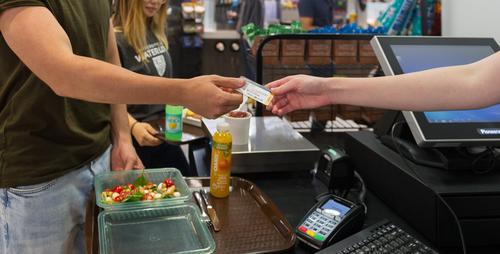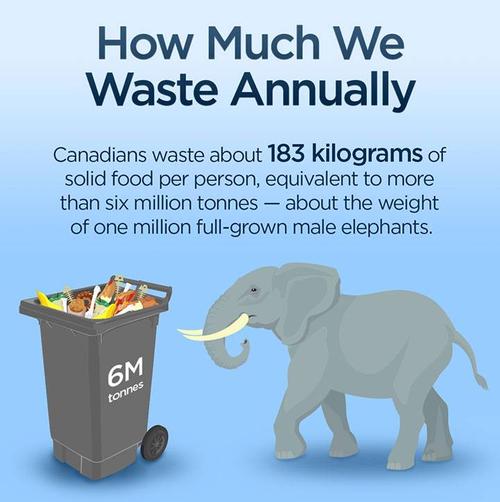According to the Commission for Environmental Cooperation, Canada is one of the worst countries in the world when it comes to food waste. About 40% of the food produced in Canada is wasted, that’s $31 billion in food waste! This food waste further goes to landfills and generates methane, a gas that is 25 times more hazardous for the environment than carbon dioxide!
In order to help combat this issue and reduce our environmental footprint on the planet, we have recently implemented a Pay by Weight system in all of our residence eateries. With this system, individuals can choose how much food they want from our hot dish section and salad bar and then have it weighed on a scale to determine the price of the meal.
Here’s a quick breakdown of how it works:
- Pick a plate, eco-container, or takeout container and fill it with your meal.
- The cashier will weigh the container or plate on a scale and then determine the price based on its weight.

Economically, this is favorable as you pay for the portion size you want as everyone has different eating habits. It also allows you to make healthier choices as you can place whatever items you wish on your plate, allowing you to create a balanced plate and have all your necessary food groups for an overall nutritious meal.
Environmentally, this is a step closer to reducing food waste on campus as it allows individuals to choose how much food they want, avoiding cases of leftover food from being thrown out. Our chefs at residence eateries further make fresh dishes is small batches to prevent food from being wasted at the end of the day!
 Source: Global News
Source: Global News
Now you know that eating at our residence eateries is sustainable and beneficial for tackling issues such as climate change, but have you wondered what you can do outside of campus to reduce your food waste?
Here’s a list of things you can do to avoid food waste:
- Make a list: Before you go into the grocery store, make a list of what you want and stay committed to buying only what’s on it. This prevents you from purchasing excessive foods that will end up being thrown away.
- Pick the first item: Don’t reach the back when picking items like milk and bread. Pick the ones that are at the front and will expire first at the grocery store, no one likes to be wasted.
- Freeze food: Freezing food that isn’t going to be eaten straight away extends its life, so you can eat it later.
- Donate leftovers: Anything that remains can be given to your local food bank! We have one on campus in SLC, ask the Turnkey Desk for details!
References
Commission for Environmental Cooperation. (2019). Characterization and Management of Food Loss and Waste in North America [Ebook]. Montreal. Retrieved from http://www3.cec.org/islandora/en/item/11772-characterization-and-management-food-loss-and-waste-in-north-america-en.pdf
Help End Food Waste - David Suzuki Foundation. (2019). Retrieved from https://davidsuzuki.org/queen-of-green/help-end-food-waste/
Mortillaro, N. (2019). Food waste: 5 graphics that show just how much food we throw away. Retrieved from https://globalnews.ca/news/2952243/food-waste-5-graphics-that-show-just-how-much-food-we-throw-away/





